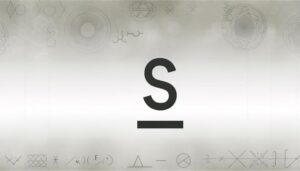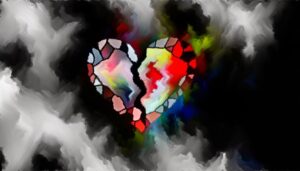What Does the Circle Triangle Symbol Represent?
The circle in a triangle symbol, originating from ancient Egypt and Greece, embodies profound concepts such as unity, balance, and the integration of opposites. Historically, it has represented the Eye of Horus and has been utilized to explore geometric principles.
In esoteric traditions, the triangle symbolizes the triadic nature of existence, while the circle signifies completeness and eternity. This symbol has significant meaning in alchemy, analytical psychology, and spirituality, contributing to self-realization and transformation.
Its influence extends to art, design, and mathematics. Further exploration reveals its enduring versatility and cultural significance throughout history.

Key Takeaways
- Represents unity, balance, and integration of opposites, originating from ancient Egypt and Greece.
- Holds spiritual significance, symbolizing completeness and the quest for enlightenment.
- Used in alchemy and psychology to denote material and spiritual transformation.
- Features prominently in art and design for its geometric purity and aesthetic simplicity.
- Adaptable to modern technology, maintaining relevance in augmented reality and digital interfaces.
Historical Origins
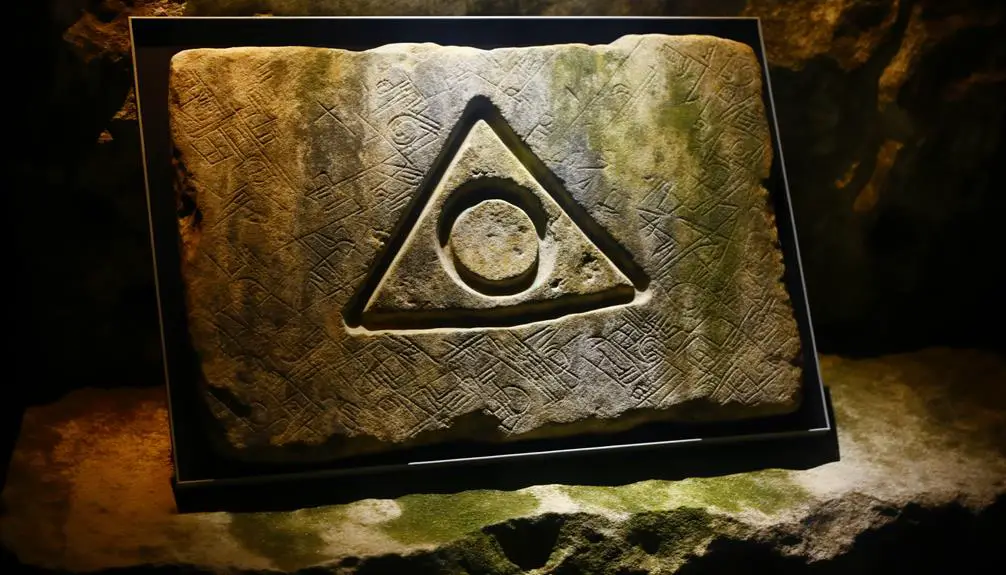
The symbol of a circle within a triangle has historical origins that can be traced back to ancient civilizations, where it often held significant philosophical and mystical meanings.
In Egyptian iconography, it represented the Eye of Horus, symbolizing protection and royal power.
In Greek philosophy, the combination was used to explore geometric principles, embodying the unity of mind, body, and spirit.
Alchemical texts from the Middle Ages also adopted the motif, where the triangle stood for elemental trinity and the circle for the soul's eternal nature.
This geometric amalgamation encapsulated complex ideas about the universe's structure, reflecting an early attempt to understand and symbolize metaphysical concepts through simple, yet profound, shapes.
Cultural Significance
The cultural significance of the circle in a triangle symbol encompasses both ancient symbolism and modern interpretations.
Historically, this symbol has been associated with concepts of unity, balance, and the integration of opposites.
In contemporary contexts, it continues to be reinterpreted across various domains, including art, spirituality, and popular culture, reflecting its enduring relevance and adaptability.
Ancient Symbolism
In various ancient cultures, the symbol of a circle within a triangle is often imbued with profound esoteric and philosophical meanings, reflecting concepts of unity, balance, and the interconnectedness of the cosmos. This symbol appears in different cultural contexts, each attributing unique interpretations and applications. For instance, in Hinduism, the triangle represents the trinity of creation, preservation, and destruction, while the circle signifies the eternal cycle of life. Similarly, in alchemy, the triangle denotes the three essential principles—sulfur, mercury, and salt—encapsulating the circle of the philosopher's stone.
| Culture | Triangle Meaning | Circle Meaning |
|---|---|---|
| Hinduism | Trinity of creation, preservation, destruction | Eternal cycle of life |
| Alchemy | Three essential principles: sulfur, mercury, and salt | Philosopher's stone |
| Greek | Delta symbolizing change | Perfection and wholeness |
| Egyptian | Pyramid representing stability and ascension | Sun and eternal life |
Modern Interpretations
Modern interpretations of the circle within a triangle symbol often reflect contemporary values and ideologies, building upon its rich historical foundation.
In modern culture, the symbol is frequently associated with the integration of mind, body, and spirit, echoing holistic and wellness movements.
It is also interpreted through the lens of unity and harmony, signifying the convergence of diverse elements into a cohesive whole.
Additionally, this symbol finds relevance in various spiritual and philosophical contexts, representing enlightenment and the pursuit of higher knowledge.
Its geometric simplicity allows it to be versatile, resonating with themes of balance and interconnectedness, thereby maintaining its significance in both personal and collective domains.
This enduring relevance illustrates the timeless appeal of geometric symbolism in contemporary thought.
Esoteric Interpretations
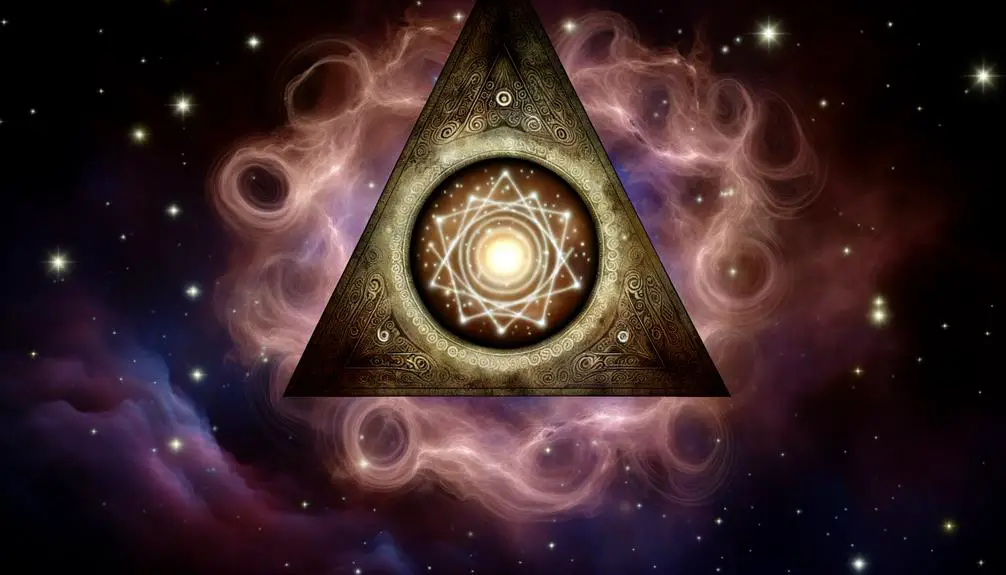
Esoteric interpretations of the circle in a triangle symbol often explore concepts of unity, balance, and the convergence of spiritual forces.
Within this framework, the circle represents wholeness and infinite potential, encapsulating the idea of unity within the self and the cosmos.
The triangle, with its three distinct points, symbolizes balance and the triadic nature of existence, such as mind, body, and spirit.
The intersection of these shapes is seen as a sacred convergence, where the infinite meets the finite, embodying a harmonious synthesis of dualities.
This esoteric symbol is perceived as a powerful emblem of spiritual equilibrium, guiding individuals toward a deeper understanding of their place within the universal order.
Symbolism in Alchemy
Within the context of alchemy, the circle in a triangle symbol embodies the synthesis of material and spiritual transformation, signifying the pursuit of the philosopher's stone and the unity of opposites. Alchemists viewed this emblem as a representation of the three primary substances: sulfur, mercury, and salt. The triangle denotes the triadic nature of existence, while the circle symbolizes completeness and eternity. The table below elucidates the symbolic elements and their meanings:
| Symbol | Element | Meaning |
|---|---|---|
| Triangle | Sulfur | Spirit, volatility |
| Triangle | Mercury | Mind, fluidity |
| Triangle | Salt | Body, solidity |
| Circle | Eternity | Infinite cycle, wholeness |
| Circle in Triangle | Philosopher's Stone | Ultimate transformation |
This convergence underscores alchemy's core principle: the integration of disparate elements into a harmonious whole.
Spiritual Meanings
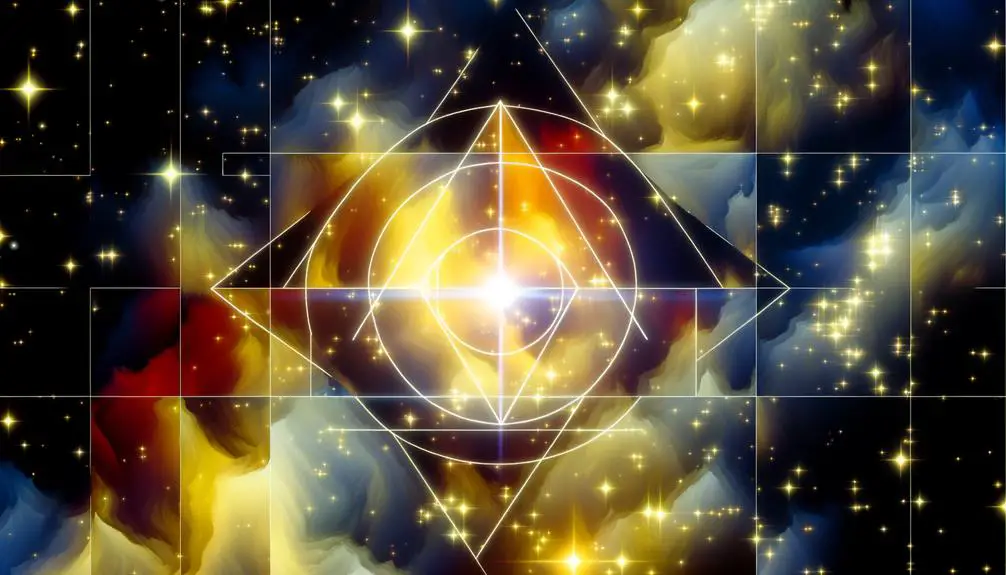
The circle in a triangle symbol, beyond its alchemical connotations, also holds profound spiritual significance, representing the interplay between unity and diversity in the quest for enlightenment.
The triangle, symbolizing the trinity of mind, body, and spirit, encapsulates the circle, which signifies wholeness and eternity. This juxtaposition underscores the journey from individual fragmentation towards holistic spiritual integration.
In many traditions, the circle within the triangle is perceived as the soul's path through the material world, seeking to achieve a higher state of consciousness. The symbol thereby serves as a reminder that true enlightenment arises from harmonizing the diverse aspects of existence, transcending the boundaries of the self, and achieving a state of universal unity.
Modern Design Uses
In contemporary design, the circle within a triangle symbol is frequently utilized for its aesthetic appeal and its ability to convey complex meanings succinctly. This geometric combination is prevalent in various fields such as branding, architecture, and digital interfaces.
Designers appreciate its balanced form, which evokes a sense of harmony and unity. The symbol is often employed to signify integration, balance, and inclusivity, appealing to modern sensibilities that value interconnectedness.
Additionally, its minimalist yet versatile nature allows it to be easily adapted into logos, icons, and other visual elements, ensuring both distinctiveness and memorability. By leveraging this symbol, designers can infuse their work with a deeper layer of meaning while maintaining a sleek and contemporary aesthetic.
Psychological Perspectives
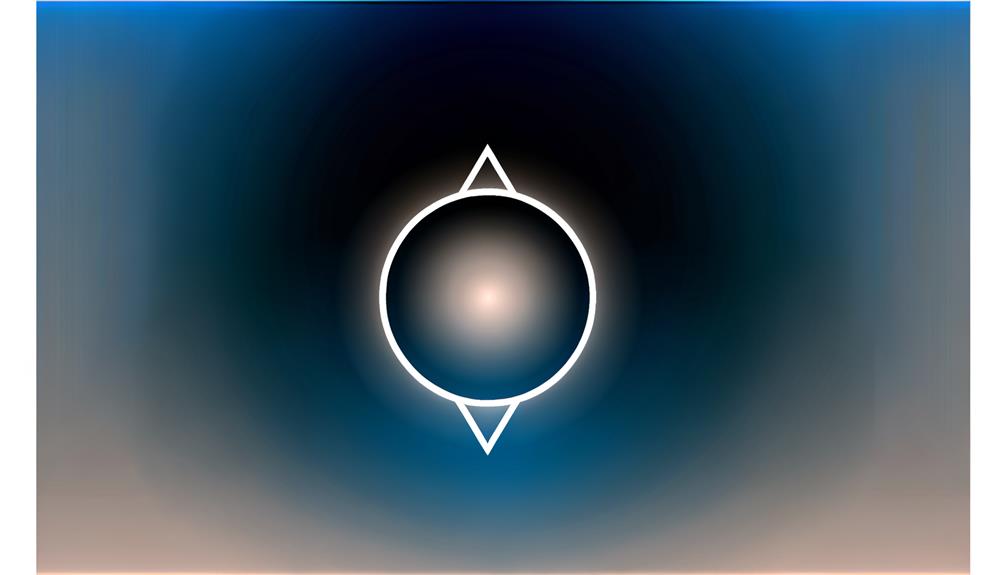
From a psychological perspective, the circle in a triangle symbol warrants an exploration of its symbolic meaning, cognitive impact, and emotional resonance.
Analyzing the inherent symbolism can provide insights into its unconscious effects on human cognition and behavior.
Evaluating emotional responses to this geometric configuration can further elucidate its influence on perception and mental states.
Symbolic Meaning Analysis
Psychological perspectives on the symbolic meaning of a circle within a triangle often highlight its representation of unity, balance, and the integration of the self. The circle, a universally recognized symbol of wholeness, encapsulates the human psyche's quest for completeness.
Encircling this within a triangle—a shape connoting stability, structure, and dynamic progression—suggests the alignment of body, mind, and spirit. This configuration is interpreted as an emblem of achieving inner harmony through the integration of disparate elements of the self.
Analytical psychology, particularly Jungian theory, underscores this combination as a mandala, a visual archetype that fosters self-realization and individuation. This symbol transcends mere geometric form, embodying profound psychological principles of synthesis and equilibrium.
Cognitive Impact Study
Examining the cognitive impact of the circle within a triangle symbol reveals its potential to influence mental processes such as perception, memory, and emotional regulation.
This symbol's geometric simplicity yet complex integration can affect cognitive processing in various ways:
- Perceptual Salience: The contrast between the curved circle and angular triangle enhances visual attention and recognition.
- Memory Encoding: The distinctiveness of the combined shapes can facilitate stronger memory retention by creating a unique cognitive imprint.
- Cognitive Load Reduction: The familiar forms may reduce cognitive load, aiding in quicker comprehension and processing.
These impacts underscore the importance of geometric shapes in cognitive psychology, demonstrating how simple symbols can significantly affect mental functions. Understanding these effects can inform fields such as design, education, and marketing.
Emotional Response Evaluation
Through the lens of psychological theories, the circle within a triangle symbol evokes specific emotional responses that can be systematically evaluated to understand its broader impact on human affect.
This geometric configuration often triggers feelings of balance and harmony due to the circle's representation of unity and the triangle's association with stability. According to Gestalt principles, the interplay between these shapes may induce a sense of completeness and security.
Additionally, the symbol's cultural and contextual meanings can amplify these effects, creating a multifaceted emotional experience. By employing methods such as self-report surveys and physiological measures, researchers can quantify these responses, providing insights into the symbol's potential applications in areas like design, branding, and therapeutic practices.
Artistic Representations
Artistic representations of the circle in a triangle symbol often utilize contrasting geometric forms to evoke a sense of balance and unity. The juxtaposition of the circle's smooth curves against the triangle's sharp angles creates a visually compelling image that is aesthetically appealing.
These representations can be found in various forms of art, each interpreting the symbol's inherent harmony in unique ways.
- Graphic Design: Employs clean lines and minimalist aesthetics to emphasize the symbol's geometric purity.
- Sculpture: Uses three-dimensional space, often incorporating materials like metal or stone to explore the symbol's physicality.
- Digital Art: Leverages advanced software to create dynamic and interactive representations, adding layers of complexity and movement.
Each artistic medium offers a distinct perspective, enriching the symbol's cultural and visual significance.
Mathematical Properties
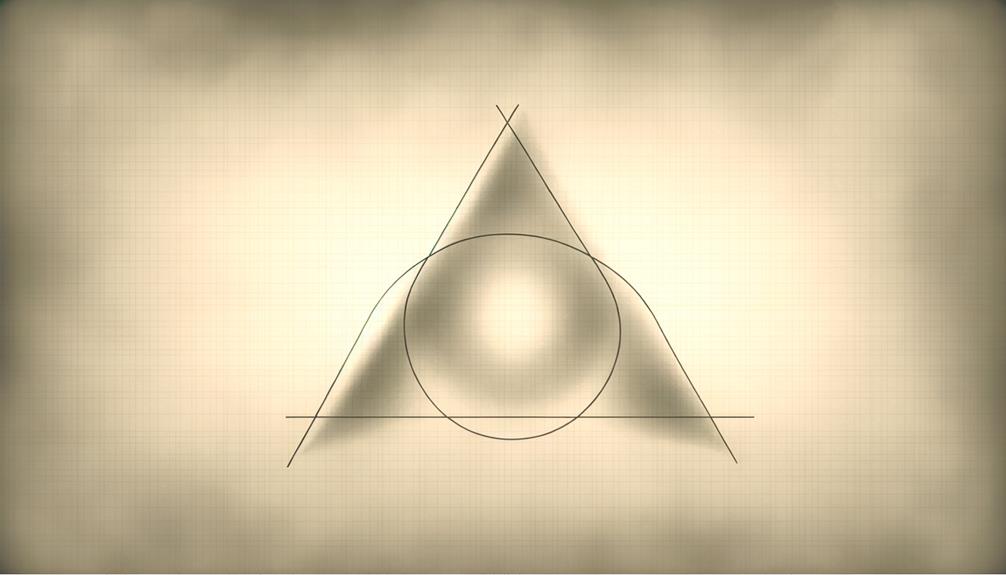
The mathematical properties of the circle in a triangle symbol reveal intricate relationships between geometric shapes and their inherent symmetries. A central aspect is the incircle, which is the largest circle that fits entirely within the triangle, tangent to all three sides. This circle's radius (r) is related to the triangle's area (A) and semi-perimeter (s) by the formula \( r = rac{A}{s} \). Additionally, the circumcircle, which passes through all three vertices of the triangle, has a radius (R) dependent on the triangle's sides (a, b, c).
| Property | Incircle Formula | Circumcircle Formula |
|---|---|---|
| Radius | \( r = rac{A}{s} \) | \( R = rac{abc}{4A} \) |
| Area Relation | \( A = sr \) | \( A = rac{abc}{4R} \) |
| Semi-Perimeter | \( s = rac{a+b+c}{2} \) | N/A |
These properties highlight the elegance of geometric interdependencies.
Comparative Analysis
The comparative analysis of the 'Circle in a Triangle' symbol necessitates an examination of its historical symbolism origins, geometric properties, and cultural interpretations. By evaluating these dimensions, we can uncover the multifaceted nature of this symbol and its varying significance across contexts.
This approach will provide a thorough understanding of how the symbol's meaning and application have evolved over time.
Historical Symbolism Origins
Across various cultures and historical periods, the symbol of a circle within a triangle has emerged with distinct meanings and implications. This symbol has been interpreted through diverse lenses, reflecting the values and beliefs of each society.
For example:
- Ancient Egypt: The symbol represented the Eye of Horus, signifying protection and royal power.
- Alchemy: It denoted the Philosopher's Stone, embodying the transformation of base materials into noble ones.
- Christianity: It illustrated the Holy Trinity, with the circle symbolizing eternity and divine unity.
These interpretations show how a single geometric figure can be infused with varied symbolic significance, depending on the cultural and historical context. This comparative analysis underscores the profound adaptability and depth of this ancient symbol.
Geometric Properties Comparison
Examining the geometric properties of a circle within a triangle reveals intricate relationships that can further elucidate the symbolic significance observed across different cultures. The interplay between a triangle's vertices and the circle's curvature is foundational in understanding these geometric constructs. Analyzing properties such as inradius, circumradius, and the points of tangency provides critical insights.
| Property | Definition | Formula/Value |
|---|---|---|
| Inradius | Radius of the inscribed circle | \( r = rac{A}{s} \) |
| Circumradius | Radius of the circumscribed circle | \( R = rac{abc}{4A} \) |
| Area of Triangle | Space enclosed by triangle's sides | \( A = rac{1}{2}ab\sin C \) |
| Semiperimeter | Half of the triangle's perimeter | \( s = rac{a+b+c}{2} \) |
| Tangent Points | Points where circle touches triangle | Dependent on specific triangle |
These geometric properties not only define mathematical relationships but also underpin the symbolic interpretations of the circle-in-triangle motif.
Cultural Interpretations Variance
Though the geometric properties of a circle within a triangle are universally consistent, their symbolic interpretations vary greatly across different cultures. This variance can be attributed to distinct cultural contexts and historical backgrounds.
- Western Traditions: Often, the symbol is seen as a representation of the Holy Trinity encapsulated by divine unity, reflecting Christian theological principles.
- Eastern Philosophies: In many Eastern traditions, it might symbolize the interplay between the eternal and the temporal, often linked to concepts of harmony and balance.
- Indigenous Cultures: Some indigenous cultures interpret it as a symbol of the earth surrounded by celestial elements, highlighting a connection between nature and the cosmos.
The multifaceted interpretations underscore the rich tapestry of human cultural expression and its impact on symbolic meaning.
Future Relevance
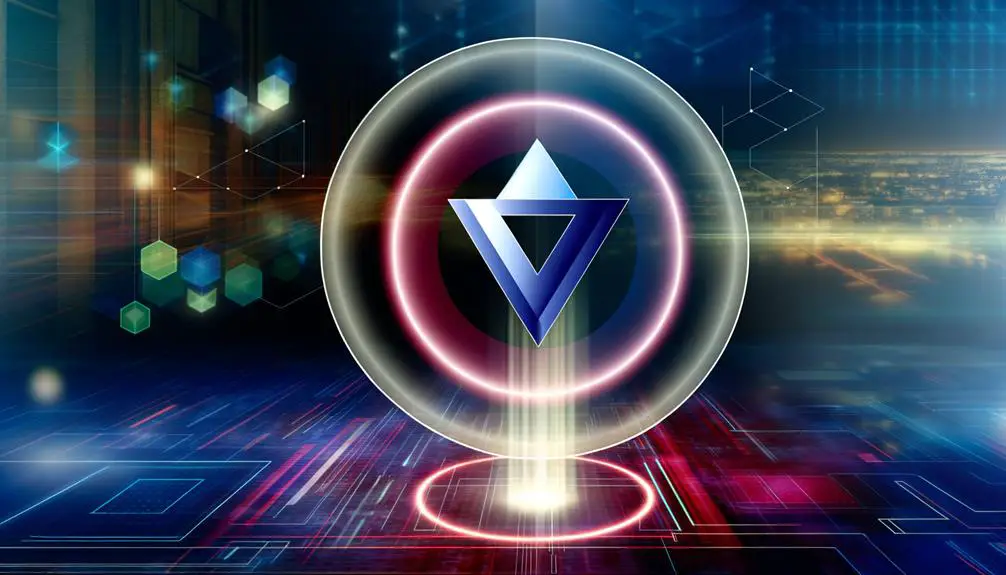
The future relevance of the circle in a triangle symbol hinges on its adaptability to evolving cultural, mathematical, and design contexts. As cultures globalize, symbols must resonate universally while retaining specific contextual meanings.
Mathematically, the symbol's geometric properties may find applications in advanced theoretical fields like topology or quantum physics. In design, its aesthetic simplicity offers versatility, potentially influencing branding, digital interfaces, and architectural designs.
This adaptability ensures the symbol's continued prominence. Future technological advancements, such as augmented reality, could further integrate this symbol into everyday experiences, enhancing its visibility and significance. Its enduring relevance will depend on its ability to maintain foundational meanings while embracing new, multifaceted interpretations across diverse applications.
Conclusion
The circle in a triangle symbol encapsulates a rich tapestry of historical, cultural, and esoteric meanings, akin to a prism that reveals diverse spectra when examined from different angles.
Its presence in alchemy and spirituality underscores its multifaceted symbolism, while its mathematical properties offer a rigorous analytical framework.
Artistic representations further amplify its significance, making it a timeless symbol.
Future relevance hinges on continued scholarly exploration and evolving cultural contexts, ensuring its enduring legacy.





